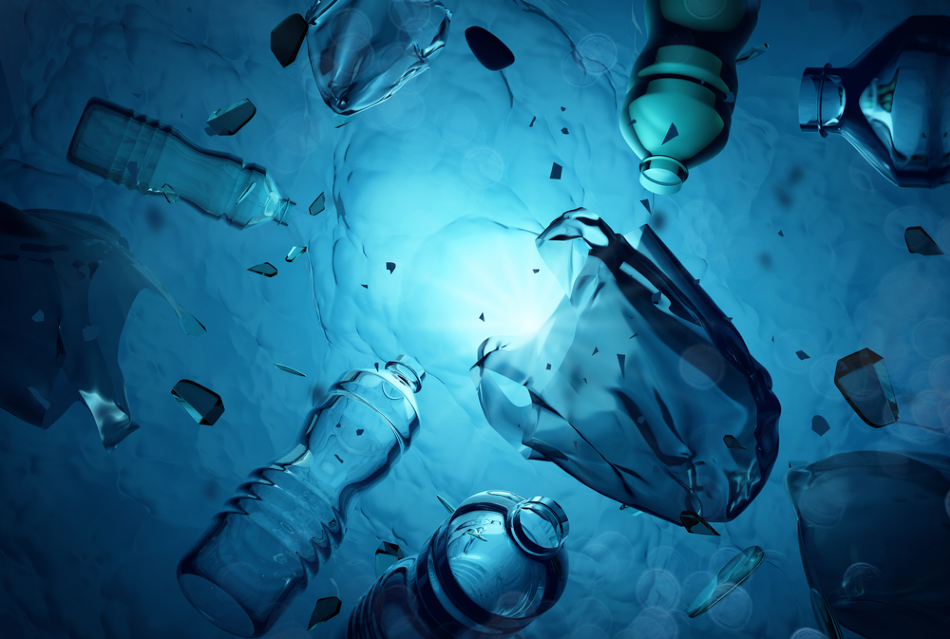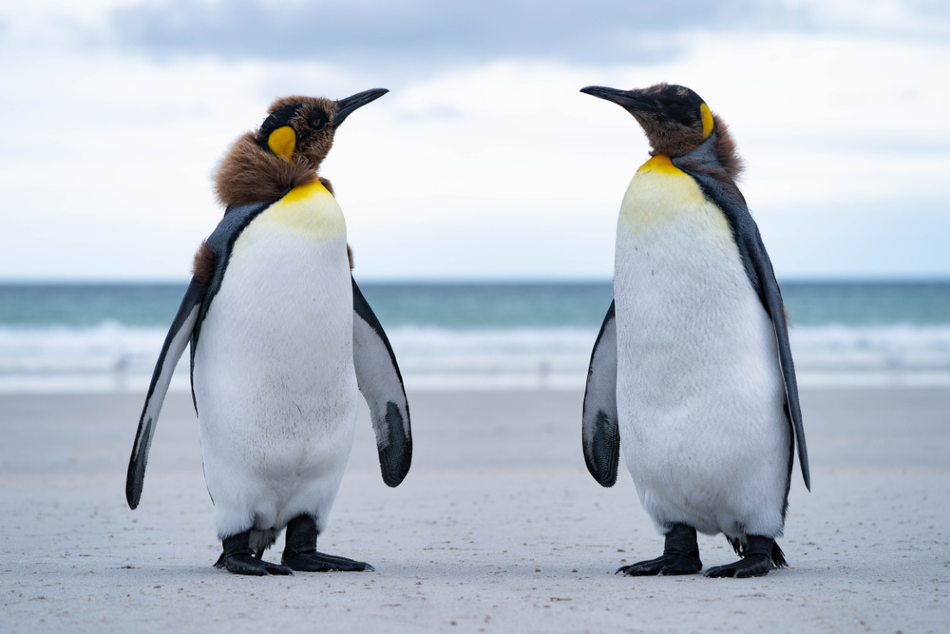
Studies have found microplastic contamination in King Penguin diets. Image Credit: solarseven/Shutterstock.com
Significant disturbances are increasingly occurring in marine ecosystems all over the world due to overfishing, climate change, and plastic pollution. It is estimated that there are almost 300 million tons of plastic debris floating on the sea's surface and it is believed that the plastic debris originates from land sources such as beaches, rivers, wastewater discharges, and transport of plastic waste by the wind.
As plastic items break down, they reduce in size to microplastics or microfibers. Their very small size means that they can easily pass through the treatment systems of wastewater treatment plants and end up in bodies of water such as lakes, rivers, and oceans. Once these tiny particles reach open bodies of water, they are unavoidably ingested by different organisms, causing plastic contamination all along the food chain.
The most abundant form of microplastic waste is microfibers, which are threadlike particles that come from products such as clothes and carpets. For example, washing clothes causes microfibers to be released. A single 5 kg wash load containing polyester textiles can release 6,000,000 microfibers (Le Guen et al. 2019).
Plastic Contamination in King Penguins
In a study by Le Guen et al. (2019), microplastic contamination in the diet of King Penguins breeding at South Georgia was examined. This was done by collecting their fecal samples and analyzing them for the presence of microplastics. It was found that 77% of the fecal samples contained microfibers. There were no other human-made items found in the fecal samples.
For chick-rearing penguins, the number of microfibers per gram weight of lab-dried fecal matter is seven on average, while it is 26 for incubating penguins and 32 for non-breeding penguins. The average length of each fiber was about 1700 micrometers, with an average diameter of 18 micrometers. Most of these microfibers (88%) are made up of natural materials such as cotton and linen, and the remaining 12% are made up of synthetic fibers such as polyester, polypropylene, and acrylic.
Mesopelagic fish form a large part of a King Penguin's diet. These fish reside at greater depths where light is reduced during the day to avoid being detected by visual predators. At night, the fish feed on organisms such as zooplankton at the water's surface.
Plastic micro-particles floating at the surface are ingested by the zooplankton, which is then eaten by the fish. King Penguins are capable of diving to a depth of 400 meters where they hunt for mesopelagic fish. When the penguins eat these fish, microplastics enter their bodies.

King Penguins ingest Mesopelagic fish, which feed on microfiber-contaminated zooplankton. Image Credit: Earth theater/Shutterstock.com
What are the Levels of Microparticles that King Penguins Ingest?
Non-breeding, incubating, chick-rearing penguins accumulate plastics in their bodies at different levels. Penguin feeding and foraging patterns depend significantly on which situation applies to a particular penguin. Penguins that are incubating eggs forage further north at the Antarctic Polar Front, and they travel longer distances from South Georgia than penguins that are raising chicks.
The penguins that travel further have a concentration of plastics that is more than twice as high as in penguins that are raising chicks. This difference may be because more microplastics are floating in the surface waters north of the Antarctic Polar Front. It could also be because the penguin parents are transferring some plastics to their chicks during feeding, which lowers the plastic concentration in their bodies. Feeding chicks involves the parents regurgitating semi-digested food and feeding it to the chicks.
Plastic Contamination in Prey Animals
Microfibre ingestion by prey animals at the bottom of the food chain can result in harmful health effects such as blockage or damage of digestive tracts, or transfer of toxic compounds, which could cause a reduction in the population of these prey animals. The population decrease would then affect food availability for animals further up the food chain, such as penguins.
Microfibers made of natural materials can contain just as many chemicals as microfibers made of synthetic materials. For example, chemical dyes used in natural textile materials can be harmful to animal health.
Ingested plastic can cause inflammations in the gut, and if the particles are very small, they can pass through the digestive tract barrier and reach the blood or other organs of the animal, detrimentally affecting their functioning.
Current evidence suggests that penguins are not strongly affected by the ingestion of plastic debris, which may be because penguins feed on live prey and do not see inert items, such as bits of floating plastic, as potential food sources. It is also reasonable to suggest that most microfiber ingestion by King Penguins do not remain in their bodies for a long time since they are quickly excreted.
Generally speaking, penguins feeding in Antarctic waters are exposed to microplastics, which end up in their gastrointestinal tract. The presence of microplastics is potentially widespread in the Antarctic marine food web.
Based on a study by Bessa et al. (2019), the diet of Gentoo penguins is also contaminated by microplastics resulting from the ingestion of Antarctic krill, which makes up their primary food source. This implies that Antarctic krill is contaminated with microplastics, while the many other species that feed on krill are also likely to be exposed to microplastics.
Future Work in Penguin Microfiber Contamination
In terms of future work, the amount of microfiber contamination in prey animals, as well as in the environment where feeding takes place, needs further research in the Southern Ocean food web. An additional area of study is to determine how the level of concentration in penguins depends on their prey's digestion time.
The amount of plastic production and plastic waste is increasing in the world, and it is expected that the number of species affected will continue to grow in the future.
References and Further Reading
Le Guen, C et al. 2019, 'Microplastic study reveals the presence of natural and synthetic fibres in the diet of King Penguins (Aptenodytes patagonicus) foraging from South Georgia', Environment International, vol. 134, pp. 1-9, https://doi.org/10.1016/j.envint.2019.105303
Bessa, F et al. 2019, 'Microplastics in gentoo penguins from the Antarctic region', Scientific Reports, vol. 9, https://doi.org/10.1038/s41598-019-50621-2
Disclaimer: The views expressed here are those of the author expressed in their private capacity and do not necessarily represent the views of AZoM.com Limited T/A AZoNetwork the owner and operator of this website. This disclaimer forms part of the Terms and conditions of use of this website.